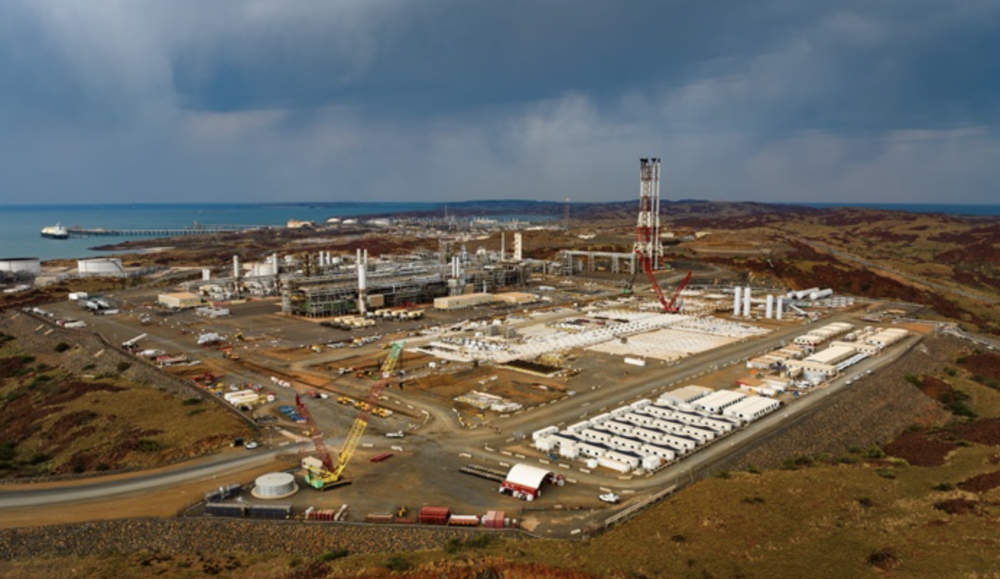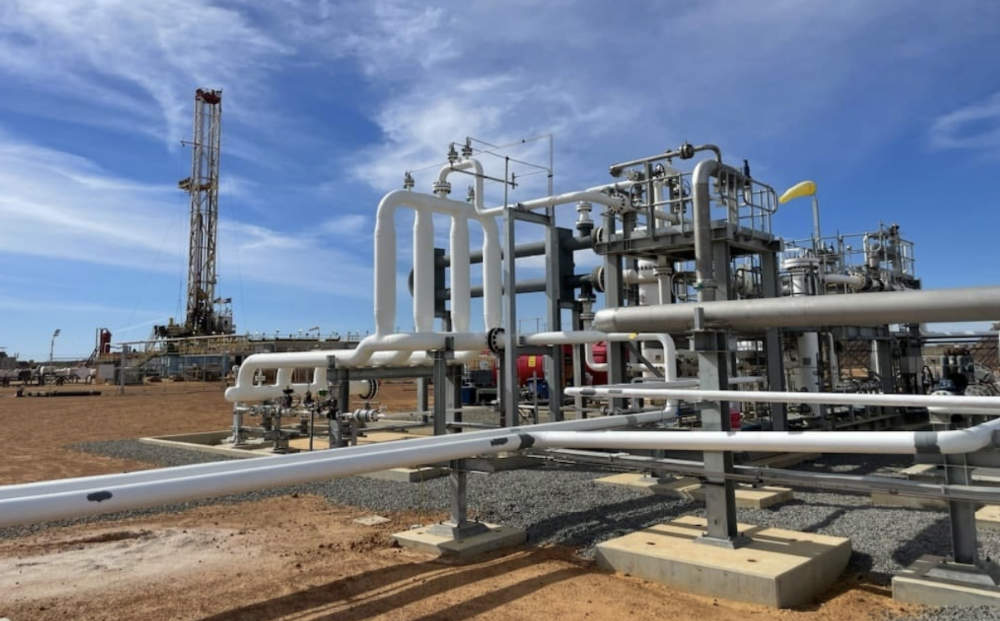Stockhead’s Great Big Aussie Gas Digest Part 2: West Coast
Energy
Energy
Shackled by red tape, devalued by the market’s embrace of ESG and hobbled during the pandemic, a few years ago you would have been forgiven for thinking gas was a dying industry.
But a price surge in 2022 and major shortages in Australian gas supply flagged by key agencies are putting the energy sector back on the map.
It takes a steady hand to navigate the sensitive nature of the Aussie gas game. That’s why we’ve got Stockhead’s senior energy journalist Bevis Yeo on the case in this two-part special to tell you which gas projects could be goers in our Great Big Aussie Gas Digest.
For the first part on potential solutions to the East Coast’s gas supply crisis, read here.
For many years, Western Australia has enjoyed low gas prices compared to the rest of the country thanks to the Domestic Gas Reservation policy.
That requires giant offshore gas developments found in the mining state to set aside 15% of their gas for domestic use.
With the DGP insulating the state from price shocks, this has meant that for many years sandgropers enjoyed wholesale gas prices of about $3 per gigajoule.
However, in recent years prices have risen steadily to about $9-10/GJ – still significantly lower than prices on the East Coast, which currently averages between $12-14/GJ, but enough to get local consumers and manufacturers antsy.
There are a few reasons.
Firstly, gas-fired power generation has been required to pick up the slack from coal closures while replacing diesel at mines and processing plants as a quick way to make interim emission reductions.
Secondly, like over in the east, a number of significant offshore gas developments found themselves mired in red tape and legal challenges.
Last, but certainly not least, is the declining production from existing WA gas fields.
Given these issues, the Australian Energy Markets Operator forecast in December 2023 that the WA domestic gas market would experience a deficit exceeding 100 terajoules per day from 2031.
This represents more than 10% of WA’s demand each year and even takes into account several new projects such as Scarborough coming online.
For a little bit of context, every TJ of gas provides enough power for 30 homes during an entire year.
Like the east coast, the solution – in the short to mid term at least – is to develop new sources of supply.
However, red tape and legal challenges have also resulted in delays to some projects, which certainly hasn’t done the state any favours.
While offshore fields remain the biggest source of gas in the State, recent years have also seen the transformation of the onshore Perth Basin from a home for small-scale oil and gas fields into an area known for significant deep gas discoveries.
Aimed primarily at providing gas feedstock for Woodside Energy’s (ASX:WDS) Pluto LNG project – specifically underpinning the 5Mtpa Train 2 and 3Mtpa of gas to Train 1, there’s little doubt that the $16.5 billion Scarborough gas project is one of the most significant that will come on line in the near-term.
Woodside made a final investment decision in late 2021 and expects the field, which has estimated technically recoverable gas of 11.9 trillion cubic feet (Tcf) of gas.
Production is expected to start in 2026 where besides fuelling up the LNG trains, it will also add up to 225TJ/d to the state’s domestic market.

While Scarborough will soon prop up WA’s domestic gas sector, Woodside’s other big field – Browse – remains mired in the environmental approvals process and potentially high capital costs, even if it gets cleared.
A large part of this is due to its high CO2 content of between 8% and 12%, which contrasts starkly with just 0.5% in Scarborough. That means it will require the inclusion of carbon capture and storage.
While this doesn’t rule out the major deciding to press on with development of the field, it certainly will have a more challenging time getting it off the ground.
Even if the project gets the green light, it will still require time before development begins and first gas is produced.
Waitsia is best known for unlocking the deep gas potential found within the Kingia and High Cliff Sandstone formations in the Perth Basin when it was first discovered by AWE and Origin Energy (ASX:ORG) .
While subsequent discoveries have since proved that the project was the play opener, it is nonetheless the most advanced gas project in the area with current owners Mitsui E&P Australia, which acquired AWE, and Beach Energy (ASX:BPT) already producing some 20-30TJ/d of gas into the domestic market.
However, the significantly larger Stage 2 development, which will have 250TJ/d capacity, secured a special exemption from the WA state government that allows it to export gas rather than selling it into the domestic market to pay for its development costs.
This stage will use about 225TJ/d of its capacity to export a planned 1.5Mtpa of LNG with first gas expected in early 2025.
Half of the project’s reserves can be sold as LNG with the remaining half reserved for domestic use.
One normally does not consider Mineral Resources (ASX:MIN) when it comes to gas projects, but the diversified miner does indeed hold the Lockyer gas project – targeting the same Kingia sandstone as Waitsia – that has seen some impressive gas flow rates.
The recent Lockyer-5 ST-1, which is set to be the fourth production well, achieved an outstanding tubing constrained gas flow rate of 106 million standard cubic feet per (MMscf/d), the highest stabilised flow rate on record in the Perth Basin.
A final investment decision is expected in Q4 2024, though this is subject to the State Government agreeing to a partial export exemption similar to that enjoyed by Waitsia.
Engineering of the proposed 250TJ/d gas processing facility is progressing and the company has started the long-lead equipment procurement process.
This is aimed at delivering first gas in FY2026, though much of the rationale for MinRes’ billionaire boss Chris Ellison is also around supplying MinRes’ own lithium and iron ore mines with low cost energy.
Waitsia may have unlocked the Kingia and High Cliff Sandstone formations in the Perth Basin but Strike Energy’s (ASX:STX) 2019 discovery of the West Erregulla gas field – with pretty substantial gas resources in the same formations – confirmed it was no fluke.
Subsequent appraisal and development wells proved up the scale of the field and its ability to produce significant quantities of gas, with the West Erregulla-3 well achieving peak flow rates of 90MMscf/d.
The field, which STX holds equally with Gina Rinehart’s Hancock Energy, has 422PJ of proved and probable gas reserves, enough to support ~14 years of production.
A final investment decision is due in Q3 2024 for a development capable of producing up to 87TJ/d of gas.
The EP469 joint venture has already received the Ministerial Statement issued under WA’s Environmental Protection Act for the upstream infrastructure, while pipeline developer AGI Operations has received the same for the midstream (pipeline) infrastructure.
STX is also looking to develop the wholly-owned South Erregulla field as a standalone development that includes an 85MW peaking gas power plant that could start operating by October 2026.
While West Erregulla will mark its entry into the bigger leagues, STX actually became a producer in September 2023 after sanctioning the wholly-owned Walyering project in 2022.
Walyering was first discovered in 1971 and produced just 300MMscf of gas before it was abandoned.
Strike subsequently acquired the project in 2019 and interpreted the previous result as being due to wells that were not optimally located.
This led it to drill the Walyering 5 and 6 wells that produced gas at rates of 78MMscf/d and 35MMscf/d respectively, more than proving its theory and leading straight to its development as a low-cost, fast to market project.
The field currently produces up to 33TJ/d through a facility powered entirely by solar and battery power while the gas is supplied to Santos WA Energy and Alinta Energy.
Efforts are also underway to find more gas with flow testing currently underway for the Walyering-7 well.

First discovered in 2021, the Rafael-1 well drilled by Buru Energy (ASX:BRU) successfully flowed 7MMcf/d of gas.
The Rafael conventional gas and condensate field in the Canning Basin has since been independently assessed to host up to 1Tcf of recoverable gas at the 3C contingent resource level.
Development is currently planned to be carried out in two phases, with the first being a Kimberley hybrid gas to power and renewables project for domestic consumption.
This could be ready for a final investment decision in mid-2025.
Phase 2 is likely to be focused on export – enabled by an update to the WA Domestic Gas Policy that specifically allows Canning Basin fields to supply gas for export as long as they make available 15% of their resources for domestic use.